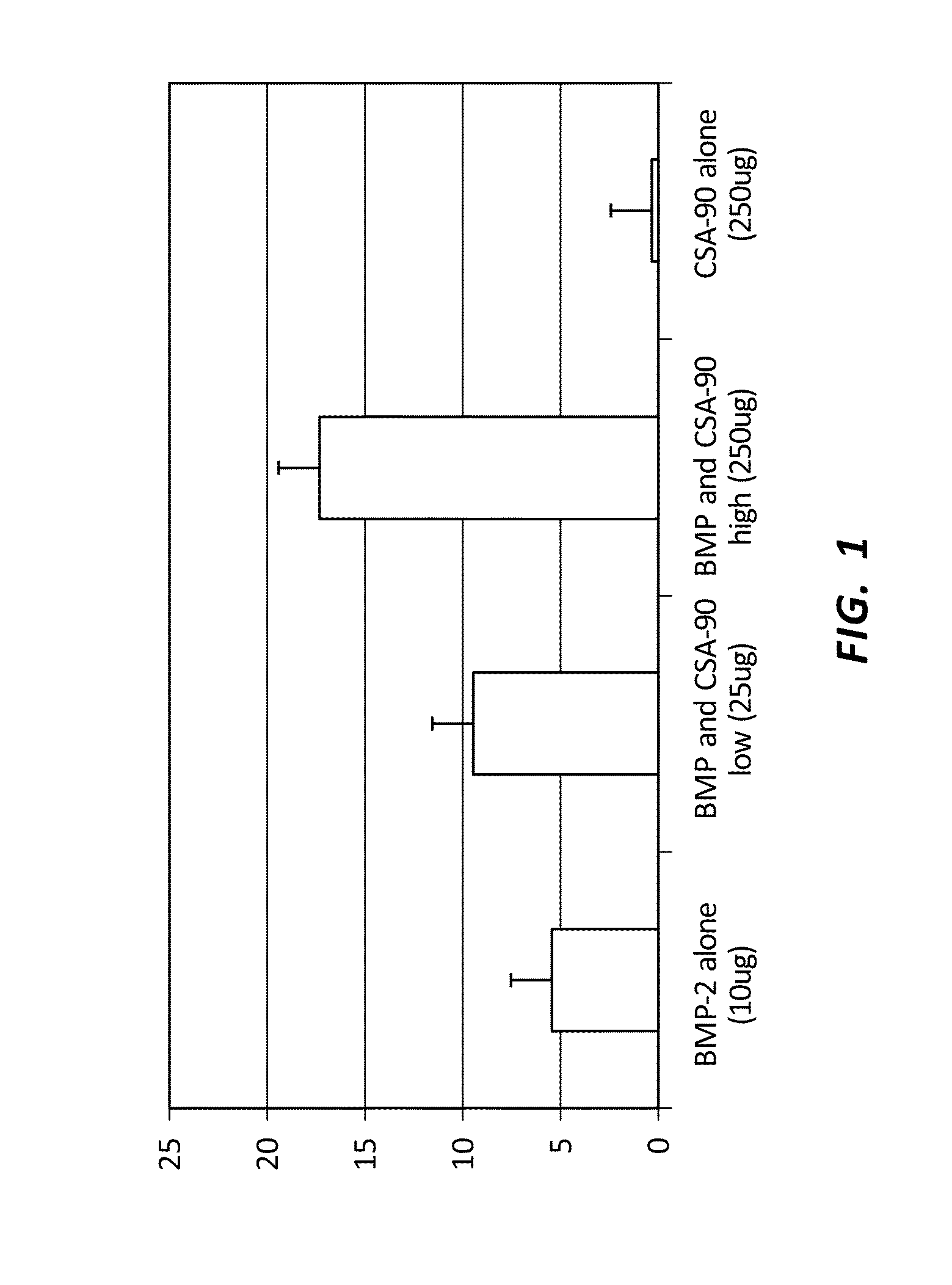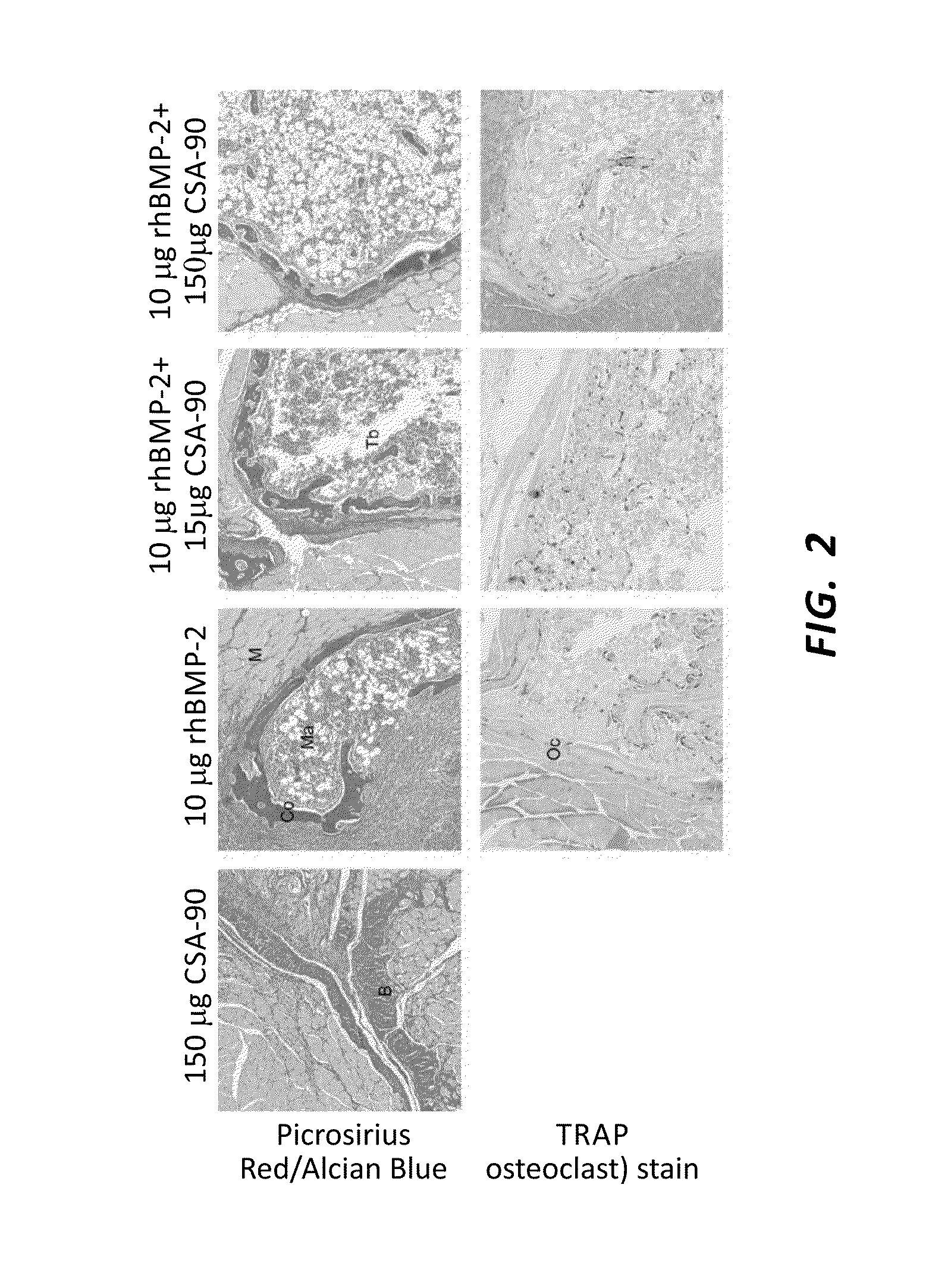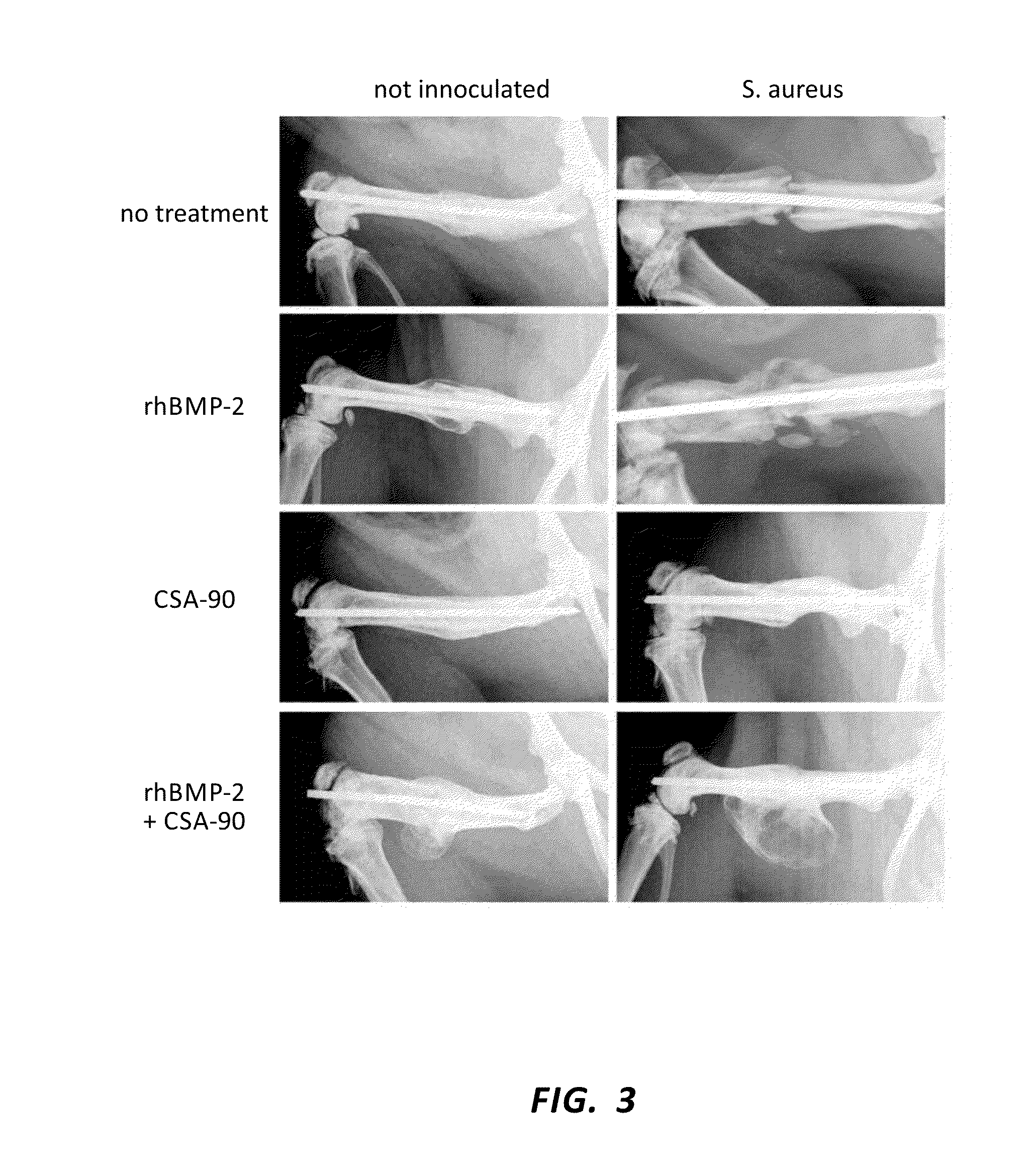Anti-infective and osteogenic compositions and methods of use
a technology of compositions and compositions, applied in the field of cationic steroidal antimicrobials, can solve the problems of low osteogenesis rate, low antimicrobial activity, and high cost of producing peptide-based therapeutics, and achieve the effect of promoting osteogenesis
- Summary
- Abstract
- Description
- Claims
- Application Information
AI Technical Summary
Benefits of technology
Problems solved by technology
Method used
Image
Examples
examples
Anti-Infective Activities
[0192]Representative Procedure for Measuring MIC Values: A suspension is prepared of bacteria containing ˜106CFU (colony forming units) / mL from a culture incubated in TSB at 37° C. for 24 hours. Aliquots of 1 mL of the suspension are added to test tubes containing 1 mL TSB and incrementally varied concentrations of CSA compound. The samples are subjected to stationary incubation at 37° C. for 24 hours. Sample turbidity is determined by measuring absorption at 760 nm (HP 8453 UV-Visible Chemstation, Hewlett Packard). Additionally, an alliquot from each of the samples showing no measurable turbidity is subcultured on TSA plates (alliquots were diluted to provide fewer than 300 CFU). Colonies that grow on the subculture after overnight incubation are counted and the number of CFU / mL in the samples is calculated. The calculated values are compared to the number of CFU / mL in the original inoculum. MIC values are determined as the concentrations of the studied com...
PUM
| Property | Measurement | Unit |
|---|---|---|
| pH | aaaaa | aaaaa |
| pH | aaaaa | aaaaa |
| pH | aaaaa | aaaaa |
Abstract
Description
Claims
Application Information
 Login to View More
Login to View More - R&D
- Intellectual Property
- Life Sciences
- Materials
- Tech Scout
- Unparalleled Data Quality
- Higher Quality Content
- 60% Fewer Hallucinations
Browse by: Latest US Patents, China's latest patents, Technical Efficacy Thesaurus, Application Domain, Technology Topic, Popular Technical Reports.
© 2025 PatSnap. All rights reserved.Legal|Privacy policy|Modern Slavery Act Transparency Statement|Sitemap|About US| Contact US: help@patsnap.com



